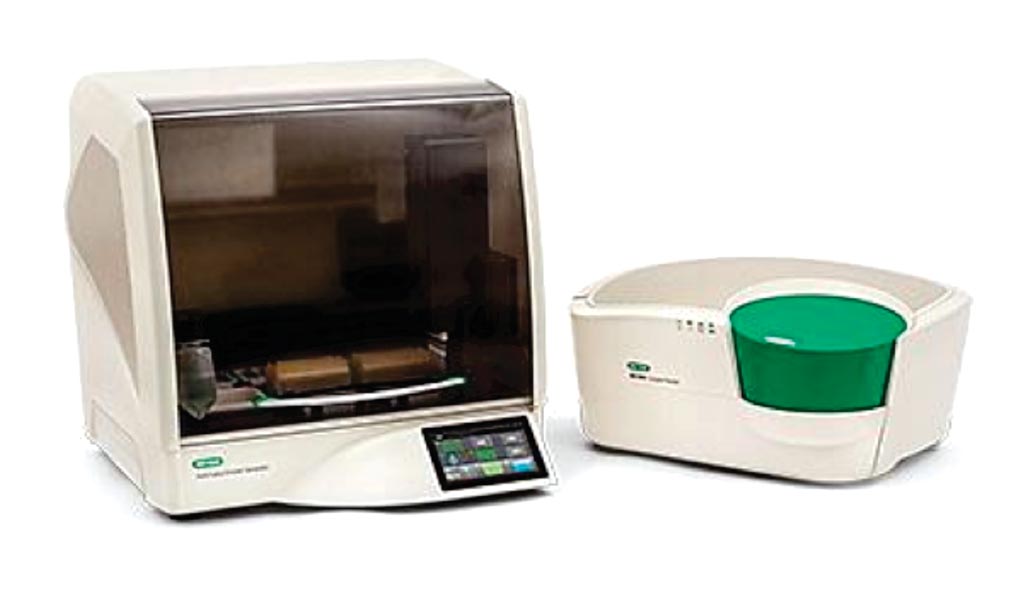Molecular Technology Identifies Potential Biomarker for Cancer
By LabMedica International staff writers
Posted on 26 Apr 2018
For patients with early-stage non-small cell lung cancer (NSCLC), the only recommended treatment option is surgery. After complete resection patients with disease at the same stage experience different outcomes, and within five years a third of patients relapse.Posted on 26 Apr 2018
Prognostic biomarkers are urgently needed to more accurately predict recurrence following surgery and potentially guide the decision to administer adjuvant chemotherapy for high-risk patients. The use of droplet digital polymerase chain reaction (ddPCR) technology in the clinic is increasing due to the technology's ability to reliably detect and quantify these biomarkers, as well as ddPCR's technical simplicity, speed, and cost-effectiveness.

Image: The QX200 AutoDG Droplet Digital PCR System provides absolute quantification of target DNA or RNA molecules for EvaGreen and probe-based ddPCR applications (Photo courtesy of Bio-Rad).
Scientists collaborating with the National Cancer Institute (Bethesda, MD, USA) evaluated the prognostic significance of two biomarkers, namely Homeobox A9 (HOXA9) promoter methylation and blood vessel invasion (BVI), for risk stratification of stage I lung adenocarcinoma patients. The type of biospecimens and the choice of assay platform are key issues to foster translation of biomarkers to the clinic. The team demonstrated the application of a ddPCR-based assay to analyze HOXA9 promoter methylation in formalin-fixed, paraffin-embedded (FFPE) tumor specimens, generated during routine pathologic assessment of resected patients.
The investigators used 177 formalin-fixed, paraffin-embedded (FFPE) tumor samples, and showed that high methylation was associated with worse cancer-specific survival (Hazard Ratio [HR], 3.37) and identified high-risk stage IA and IB patients. Importantly, addition of this molecular marker improved a risk model comprising clinical and pathologic parameters. HOXA9 promoter methylation was associated with a transcriptome signature enriched in genes marked by Polycomb in Embryonic Stem Cells, a signature previously associated with poor differentiation and worse overall patient survival. Moreover, BVI was independently associated with poor outcome (HR, 2.62) and a score that combined BVI with HOXA9 promoter methylation further stratified high-risk patients.
The authors concluded that their results support the use of ddPCR to quantify HOXA9 promoter methylation and BVI determination from routine pathology FFPE specimens, to identify patients at high risk of recurrence. The findings could help inform patient management in prospective clinical trials that evaluate the benefit of adjuvant chemotherapy in early-stage invasive lung adenocarcinoma to prevent recurrence. The study was presented at the American Association for Cancer Research (AACR) Annual Meeting, held April 14-18, 2018, in Chicago, IL, USA.
Related Links:
National Cancer Institute








 (3) (1).png)





